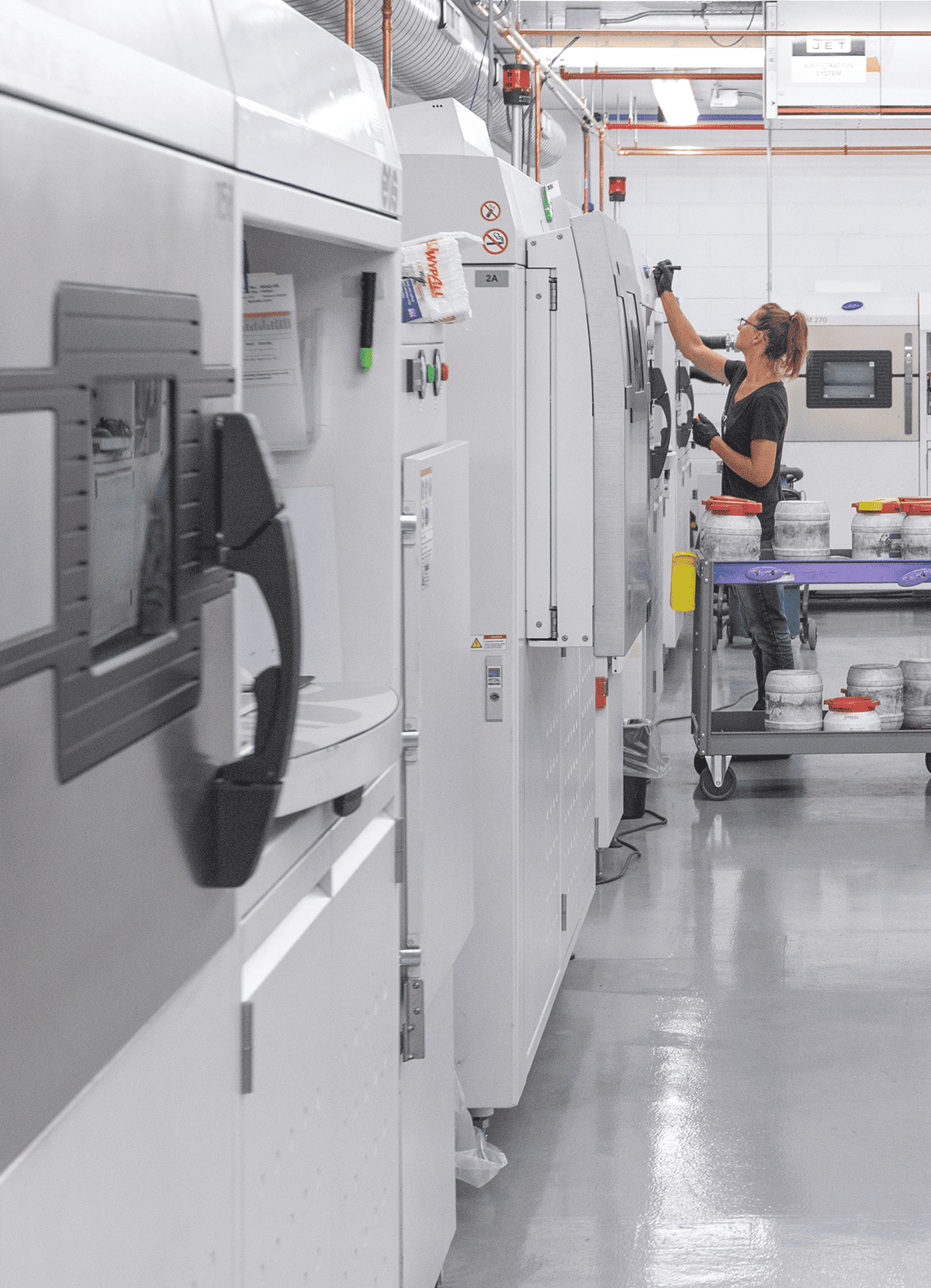Bring Us Your Complex Metal Part Designs
Fathom operates one of the largest metal additive manufacturing services in North America. Our expert engineers can help you optimize your part designs for manufacturability and build them for you using Direct Metal Laser Sintering (DMLS). We can take on your prototype, bridge production and short-medium volume production runs.
What is DMLS?
Direct Metal Laser Sintering (DMLS) is a popular metal additive manufacturing technology that uses a laser to melt 20- to 60-micron layers of metal powder on top of each other. Powdered metal is spread across the entire build platform and selectively melted to previous layers. This additive process allows metal parts to be grown out of a bed of powdered metal.
The result is a high-quality metal part that doesn’t require sintering and has the mechanical characteristics of cast metal parts. Fewer steps equal faster production – usually 5 days or less.
Because no tooling is required, parts can be produced at a lower cost and less time required for custom steel tooling and fixtures. With our expertise in metal 3D printing, we can help you build your parts cost-effectively.

What Challenges of Manufacturing Does Metal Additive Manufacturing Overcome?

Traditional metal manufacturing methods have significant design restrictions. For example, cast metal parts require tooling that can take months to make. Parts must be designed with a small amount of draft so they can be released from the mold. Cores can become very complex and costly.
CNC machining is limited to shaping blocks of metal, drilling holes and milling open-ended cavities into them. Internal features, such as cavities and channels, can’t be made using this method of manufacturing. Machining centers require sophisticated jigs and work-holding fixtures to hold workpieces stationary during milling and drilling.
Sheet metal fabrication is limited by the material thickness and the sharpness of the bends it will allow. Making small, complex parts requires extensive tooling.
In contrast, metal additive manufacturing builds a part layer by layer. Almost any shape designers can imagine can be built using this 3D printing method. One of the biggest wins is that metal 3D printing services don’t require tooling. Designs can go straight from a CAD drawing to a build file to finished parts – in a matter of a few hours.
Advantages of Metal Additive Manufacturing
Design Freedom
As we’ve seen, subtractive manufacturing techniques like CNC machining, metal casting and CNC machining place limits on what you can create. Metal 3D printing doesn’t. It can produce complex designs that include internal cavities and conformal cooling.
Part Consolidation
A key advantage of metal additive manufacturing is part consolidation. Because this process can accommodate complex designs, multiple parts can be combined into one piece, reducing material and assembly costs. Designers can also reduce weight by replacing thick, solid walls with lighter lattice structures.
Rapid Prototyping
Metal additive manufacturing empowers you to iterate your prototype part designs quickly – without the need for costly tooling. This enables you to achieve a final design quickly, at minimal cost. You can also use metal 3D printing to print multiple variations of a part at the same time to compare their designs.
Prototype to Production
Because metal parts can be produced quickly without tooling, they aren’t just for prototyping anymore. They are increasingly used as production replacement parts for bridge manufacturing and low- to medium-volume production.
Why Choose Fathom’s Metal Additive Manufacturing?
Save Money // No tooling is required for metal 3D printing. So you can finalize your metal part designs before you order tooling, and even use it for bridge and low-volume production.
Improve Time to Market // By using metal additive manufacturing for rapid prototyping, you can reach a final design faster – and ultimately accelerate your time to market.
Build Complex Geometries // Metal additive manufacturing enables the design of more complex parts with features that can’t be created using subtractive manufacturing, including internal channels and delicate overhangs. This also enables you to consolidate multi-part assemblies into single parts.
A Large Selection of Materials // Engineering materials such as stainless steel, aluminum, cobalt chrome, Inconel and titanium can be used to create fully dense parts with outstanding properties.
Build Parts Using Hard Materials // Subtractive manufacturing of certain metals, such as titanium and Inconel, is often time-consuming and expensive because of their extreme hardness. 3D printing of parts using these materials is much easier and doesn’t require as much post-processing as machined versions.
